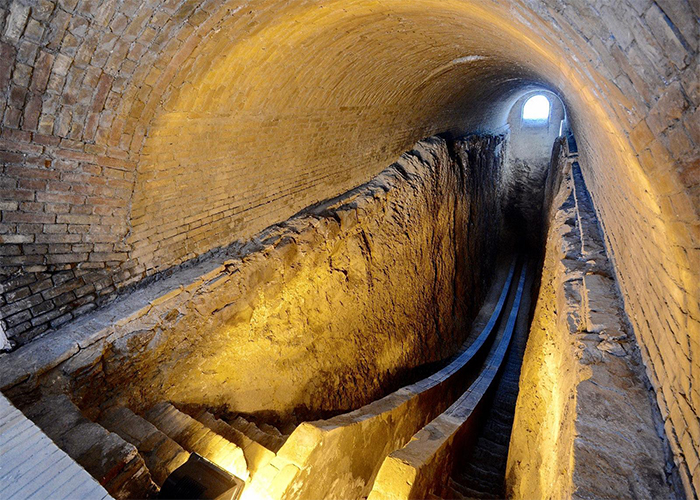Ulugbek Observatory In the Middle Ages, Samarkand was a center of both religious and secular learning, and its rulers patronized science as well as art. The Ulug Bek Observatory is one of the largest astronomical observatories of the period. the important work done there was remembered only in the astronomical works of the Grand Duke and later published in Europe. In 1908, after many years of painstaking research by Russian archaeologist Vladimir Viyatkin, the mystery of his whereabouts was solved. Today, visitors can see the underside of the broad meridian arc, neglected by fanatics in 1449. A quadrant arc of length 63m was used to determine the movement of celestial bodies across the sky. Using this bow, medieval astronomers in Samarkand developed a catalog of stars that commented on the movements of 1,018 stars that had just been discovered and studied in Oxford in the 17th century. When you first come here, it may seem like you have nothing to see, but you are wrong. The arch itself sank underground, which is why it survived in 1449 when the rest of the observatory was destroyed by fanatics. If you fall into the darkness, and you won’t be surprised at the scale of the arc and how accurately it was built. In fact, their accuracy was not known to humans until the invention of the computer. The service rooms on the ground floor were used as astronomical instruments. Those who witnessed the actual observatory described it as follows: “images of nine celestial orbits and nine celestial bodies painted inside the rooms, images of seven planets and fixed stars, images of the world globe, images of mountains and land, the sea and there were pictures of the deserts " Along with the arch and its portal, there is a museum about the life and works of the Great Beck. Ulugbek: The astronomer is the king Religion will spread like a fog and the kingdoms will perish, but the work of the scholars will last forever. Although the great prince himself was a fine mathematician, his real interest was in astronomy. In the observatory he built, Gurkhani Zij had a sextant 11 m long and 40.4 m in radius. Long before the invention of the telescope, this instrument allowed the Great Beg to pinpoint 1,000 stars, determine the year with such precision that it even surpassed Copernicus' calculations, and was able to calculate the exact slope of the Earth's axis. Given that Ulugbek and his astronomers worked without optics, it seems impossible to believe the accuracy of their calculations. Even today, we have not been able to calculate more precisely the axial slope of the earth, calculated by Ulugbek, than 23.52 °, and his results, which he calculated in 365 days, six hours, ten minutes, and eight seconds, are one of the most modern electronic calculations. more than a minute. Ulugbek and his astronomers would have had more time to study the stars, but the results would have been even more astonishing. But fate could not be changed: the observatory was destroyed in 1449 by religious fanatics. and it was forgotten underground until it was rediscovered by an archaeologist.


